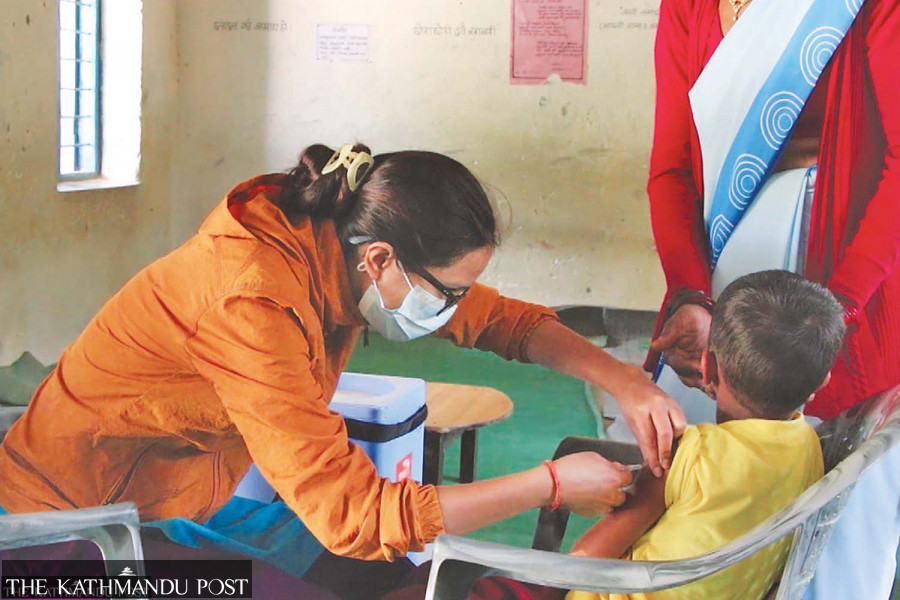Health
Over 450 students in Valley to be jabbed against measles
Four students of a Buddhist school in Gokarneshwar tested positive to the virus last week.
Post Report
The Ministry of Health and Population said it has completed all necessary preparations to administer vaccines to students of a monastery-run school at Gokarneshwar Municipality-9 that witnessed an outbreak of measles virus last week.
The viral infection was confirmed in at least four students and 62 others have symptoms of the infection, according to officials.
Hari Prasad Upadhyay, health coordinator of the municipality, said more than 450 students will be inoculated as part of the drive.
Officials said the ailing students, the symptomatic ones and those above 15 years old won’t be inoculated. Meanwhile, all nine students who were admitted to hospitals have been discharged and the health condition of those with the symptoms is normal, they added.
Measles is a highly contagious viral disease transmitted through fluids from the nose, mouth or throat of an infected person. It can be potentially deadly for unvaccinated people.
According to Upadhyay, health workers could not establish whether the students at the hostel run by the monastery were inoculated with the vaccine in the past.
Health ministry officials said the measles outbreak is often recorded in underprivileged and strict religious communities that have low vaccine coverage rates.
Earlier this year, Nepal witnessed a massive measles outbreak in 16 districts—Morang, Sunsari, Dhanusha, Mahottari, Sarlahi, Chitwan, Kathmandu, Kapilvastu, Arghakhanchi, Dang, Banke, Bardia, Surkhet, Kailali, Kanchanpur and Bajura.
At least one child died and 1003 others were infected with the virus.
Nepal had committed to eliminating measles by 2023 after missing the earlier deadline of 2019. To declare measles as eliminated, the number of cases should be less than five for every 1,000,000 people throughout the year.
However, with the outbreak of the deadly virus earlier this year, health authorities have extended the deadline to 2026.
Experts say an outbreak of the virus has been confirmed in several districts, including the Kathmandu Valley, revealing a significant gap in Nepal's routine vaccination programme.
The health ministry’s Nepal Demographic and Health Survey-2022 shows that four percent of the children in the 12–23 month age group have received no vaccination.
This figure was just one percent in 2016, and the rapid surge in the number of unvaccinated children poses a serious threat to the country’s achievements in immunisation made over the years through huge investments, child health experts have warned.
Experts say a low vaccination coverage, floating population, lack of public awareness about the importance of vaccines and apathy of the government agencies concerned to plug the loopholes are some reasons behind the regular outbreaks of measles in different parts of the country.
Doctors say people of all age groups are vulnerable to measles but underage children, pregnant women, elderly people and those with weak immunity such as HIV-infected people are especially susceptible to the virus.
Early symptoms of measles, which usually appear 10–12 days after infection, include high fever, runny nose, bloodshot eyes and white tiny spots inside the mouth. Several days later, rashes develop on the face, upper neck and other parts of the body.
Measles was endemic in Nepal and an average of 90,000 cases were recorded every year from 1994 to 2004. Routine measles vaccination began in the country in 1979, starting with three districts. The campaign extended throughout the country after 10 years. But measles still continues to stalk children across the country.




 10.12°C Kathmandu
10.12°C Kathmandu













